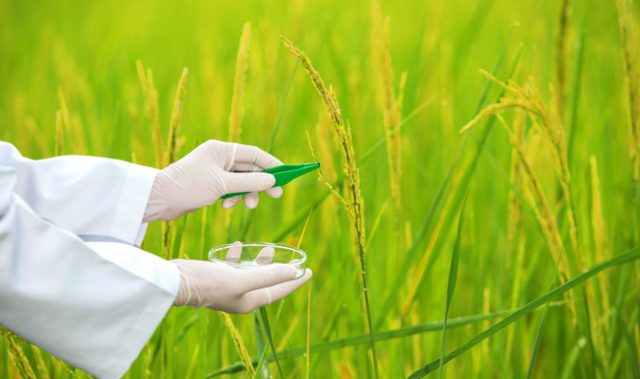
AsianScientist (May 21, 2014) – Scientists from Chinese Academy of Agricultural Sciences (CAAS) and BGI have successfully sequenced the genome of the cultivated cotton plant, Gossypium arboreum (AA). The study has been published online in Nature Genetics.
One of the most important economic crops in the world, cotton also serves as an excellent model system for studying polyploidization, cell elongation and cell wall biosynthesis. However, breeders and geneticists have little knowledge of the genetic mechanisms underlying the complex allotetraploid nature of the cotton genome (AADD). It has been proposed that all diploid cotton species present may have evolved from a common ancestor, and that tetraploid cotton species came from interspecific hybridization between the cultivated species G. arboreum and the non-cultivated species G. raimondii.
Following the sequencing of the G. raimondii genome in 2012, researchers turned their attention to G. Arboreum. Using a whole-genome shotgun approach, they obtained a draft cotton genome of 1,694 Mb.
By comparing the transcriptome of G. arboreum and G. raimondii, scientists found that the loss of nucleotide binding sites (NBS) in the G. arboreum genome might explain the species’ susceptibility to the pathogenic fungus Verticillium dahliae.
Another interesting finding of this study was that the 1-aminocyclo-propane-1-carboxylic acid oxidase (ACO) gene is a key modulator of cotton fiber cell growth. The researchers suggest that the overproduction of ACO may be why G. raimondii is a poor producer of spinnable fiber, while the inactivation of ACO in G. arboreum might explain its superior fiber production.
The G. arboreum genome will be an essential reference for the assembly of tetraploid cotton genomes and for evolutionary studies of Gossypium species. It also provides a tool for the identification and manipulation of important cotton genes for molecular breeding and genetic improvement.
The article can be found at: Li et al. (2014) Genome sequence of the cultivated cotton Gossypium arboreum.
———
Source: BGI; Photo: Josh Hallet/Flickr/CC.
Disclaimer: This article does not necessarily reflect the views of AsianScientist or its staff.












